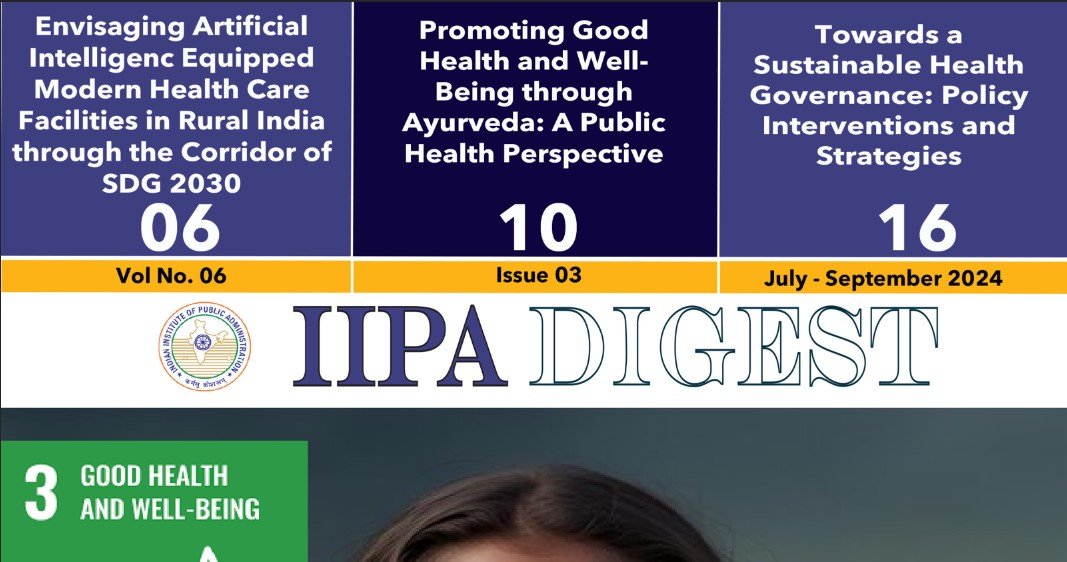State capability and effective governance have been the focus of a few recent books (Somanathan; Muralidharan). The map is never the territory and it is always better to learn from what has been attempted so far. Policy analysts are finally recognizing that Indian State is not over staffed. Ashoka Mody’s critique of failure in public goods provision (Education, health, urban infrastructure, clean water, clean air, and a fair and responsive judiciary as public goods) and of weak local governance, need to be addressed.
Six percent management cost in Sarva Shiksha Abhiyan (SSA) and the National Rural Health Mission (NRHM) – SSA and NRHM were national level pioneers in providing new skill sets through innovative hiring of professionals at block, district, State and National levels under the six percent management cost. Hospital Managers, Health Managers, Finance Managers, Programme Managers, Accounts Managers, Data Analysts, Pedagogy experts, inclusive education professionals, gender experts, civil works experts, etc, were brought in on a need and norm-based basis through these programmes. The State and district level Project offices became the pioneers in decentralized planning, monitoring, capacity building and effective governance. While the ‘projectized’ approach with new skill sets challenged the inertia of the mainstream in the short run, its non – integration with the mainstream corroded the authority of the district and State levels institutions. Clearly, institutionalization of these skill sets was much-needed task.
Capacity building support to State Projects was available from national level crafted institutions like the Technical Support Group of SSA and the National Health System Resource Centre in NRHM. While these led to new processes and practices, the challenge of institutionalizing the human resource for sustainable effective quality outcomes remains to be addressed. Through such ‘project’ initiatives, all children, including girls, have joined the elementary schooling system. The Indian Mortality Rate (IMR), Maternal Maternity Rate (MMR), Total Fertility Rate (TFR) have registered significant decline. The quality of learning outcomes in schools and the challenges related to building effective public health capacity persist. Nutrition clearly requires far greater number of well-trained care-givers. The Asha worker, the ANM and the Aanganwadi worker alone are not enough to meet the need for well-functional creches for mothers to go to work without anxiety for their infants.
Six percent plus, human resource intensive approach of National Rural Livelihood Mission (NRLM) – NRLM recognized community action as a human resource intensive process. Units were formed at Cluster and Blocks to build social capital of women’s collectives and generate economic activities for diversified livelihoods. National Resource Organizations from the civil society and private sector were roped in with ease of contracting in States, to provide support for social capital, enterprise, and diversification of livelihoods. NRLM also created the unique cadre of Community Resource Persons (CRPs) who are women who have come out of poverty under the Mission. They have been given skill sets in community mobilization, as Krishi Sakhi, Bank Sakhi, Pashu Sakhi, Enterprise Promotion, Banking Correspondents, and so on and today their number is over five lakhs. These are the true change agents at the cutting edge. They are not given government salaries. Every Village Organization gets a resource in perpetuity in the form of Community Investment Fund. Village Organizations of SHGs provide small amounts to these CRPs. The rest they are able to earn through the economic or social service they provide. It is a unique model where local women have built a nation-wide force of a hundred million women organized in ten million Self Help Groups (SHGs).
Purposively crafted institution like National Rural Roads Development Agency (NRRDA), for quality road construction and capacity building under the Pradhan Mantri Gram Sadak Yojana – NRRDA is ISO certified and every professional comes on a deputation. The annual Budget is barely Rs. thirty crore spent on Professionals, technology for universal GIS mapping of roads, support to State-level technical partners (who are mostly IITs and NITs located in respective States) and a robust system of quality monitoring. Rigorous scrutiny of each and every draft DPR, use of innovative technologies like waste plastic and many others, capacity building among State Engineers and contractors of PMGSY, have been possible. PMAY Gramin is also supported by NRRDA.
Technology as a means to make National Food Security Act (NFSA) provide food grains to all the entitled- NFSA is an outstanding example of technology-led reform for outcomes. Each and every Public Distribution Shop provides entitled foodgrains to eight hundred million people after Point of Sale (PoS) authentication of identity. An amazing feat of digital public infrastructure. The digitization, updating, and Adhaar linking of all ration cards has been a herculean task that has made technology as a means of triumph for guaranteed outcomes.
Technology to facilitate IT/DBT – Technology is only a means. Even when the JAM trinity of Jandhan, Adhaar and Mobile phone was being toasted, I had raised the importance of a data base of the deprived that could provide the fourth leg to this trinity. It came in the form of community validated Socio-Economic Survey (SECC 2011) that provided household details of each and every deprived household, based on easily identifiable indicators. Its finalization in July 2015 and its adoption thereafter across Ujjwala Gas connection, Sowbhagya free electricity connection, Pradhan Mantri Awaas Yojana Gramin beneficiary selection, entitlement to Pradhan Mantri Jan Arogya free secondary tertiary care, is an outstanding example of how technology as a means has transformed the last mile. The concerted effort at opening of adhaar linked Bank accounts is nothing short of a revolution in financial access, made possible by hand holding through community connect at the last mile.
Enhancing decentralized community action-based State capability for effective governance of human development is the way to go. Human resources for local governments must be India’s top most priority for outcomes. Let us begin from below.

